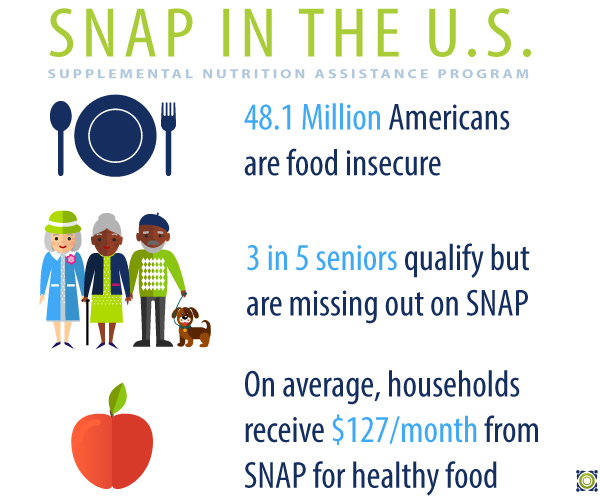In mid-March, the Food and Nutrition Service (FNS), the federal agency responsible for supervising the Supplemental Nutrition Assistance Program (SNAP, or food stamps), proposed a rule that could affect how organizations like BDT educate clients about SNAP. One of the main goals of the proposed rule is to prohibit activities designed to “persuade” individuals to apply for SNAP. This proposed rule has not been finalized, and will only go into effect after FNS incorporates and responds to public comments.
What does the proposed rule say?
The proposed rule bans recruitment activities that persuade an individual to apply for SNAP through the use of persuasive practices. Persuasive practices are defined as coercing or pressuring an individual to apply, or providing incentives to apply. The proposed rule also provides examples of such activities such as providing individuals with free parenting classes only if they agree to apply for SNAP. While bribing individuals is undoubtedly a prohibited persuasive technique, some of the other examples in the proposed rule are less clear and would benefit from revision.
Opportunities for change
While the intent of the rule is reasonable, BDT wants to be sure that FNS is aware that the rule should not prevent organizations from addressing prevalent myths that keep eligible individuals from accessing SNAP. BDT and many other stakeholders participated in a public comment process to provide FNS with this feedback. The preamble to the rule clearly states that FNS does not intend to prohibit activities that educate individuals about SNAP, a benefit that has proven to reduce food insecurity. Still, BDT’s comments seek clarification from FNS, particularly in the provided examples, so that rule interpretation is consistent across jurisdictions.
One of BDT’s main suggestions was to define “prohibited persuasive practices” as activities that pressure an individual who has already made an informed choice to not apply for SNAP to change his or her decision. BDT believes this would protect clients from coercion, while ensuring their decision to apply is based on facts, rather than myths or misconceptions, about SNAP.
If implemented in its current form and without the informed choice language, the proposed rule may limit BDT’s and other community assister’s ability to dispel widely held misconceptions. An estimated 9 million Americans are eligible but not currently enrolled in SNAP, including nearly 6 million seniors.¹ Studies confirm that a lack of education about SNAP is a major cause of low participation rates. Proper SNAP education can be the difference between millions of households going hungry or having healthy food on the table.
SNAP is a potentially life-saving benefit that raised nearly 5 million people out of poverty in 2014 alone.² BDT hopes that its comments and those echoed by other organizations regarding the proposed rule lead to improvements in the final rule, to ensure that individuals across the country continue to receive accurate information that allows them to make an informed choice about whether or not to apply for SNAP.
Read BDT’s full, detailed comments on the SNAP promotion proposed rule.
Follow us on Twitter to keep up to date on the latest regarding this proposed rule.

